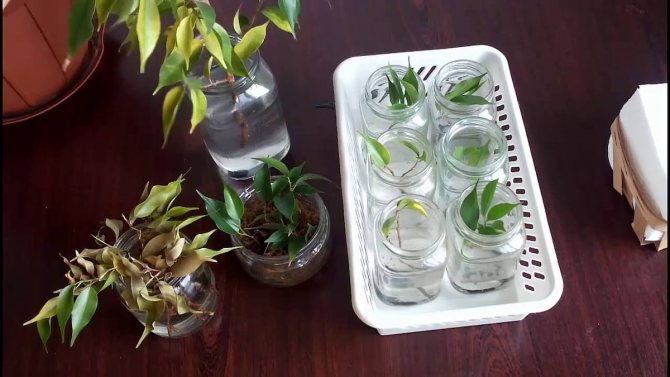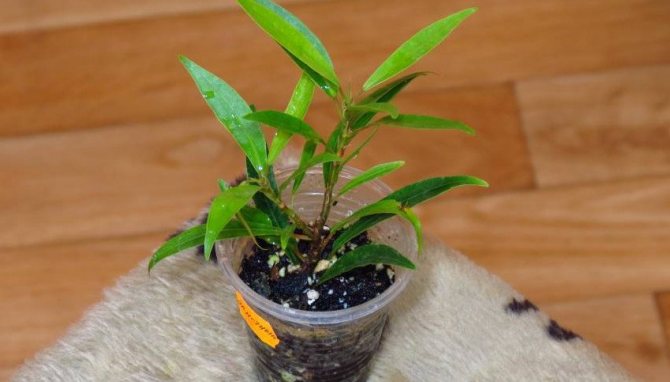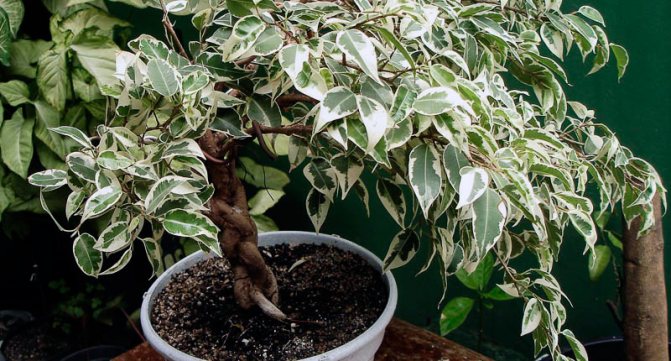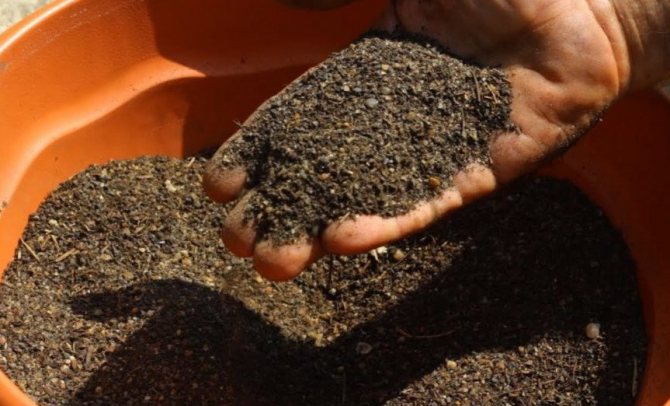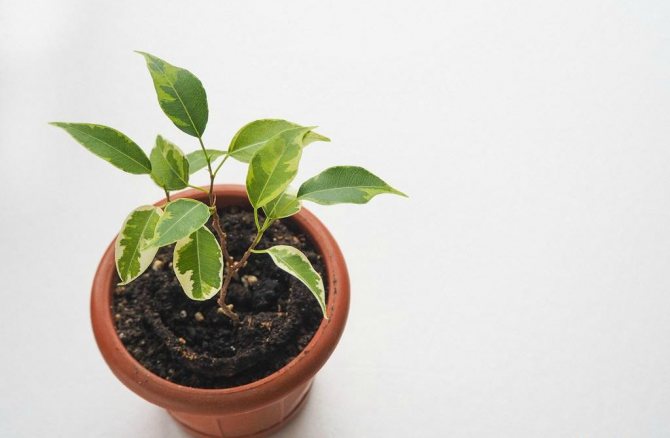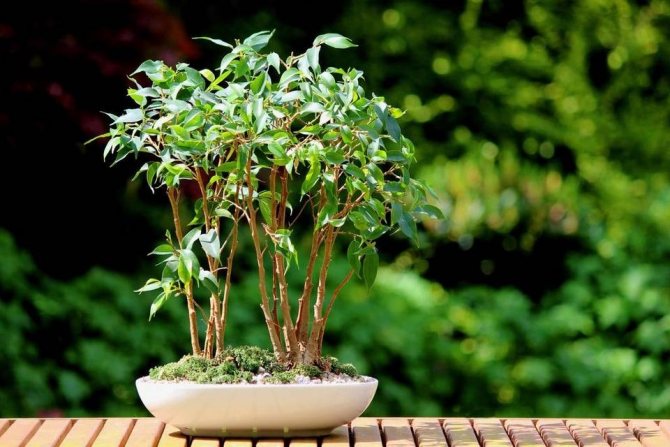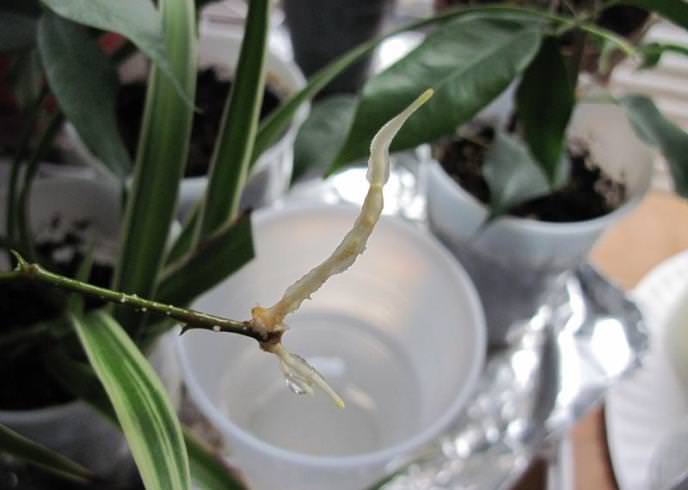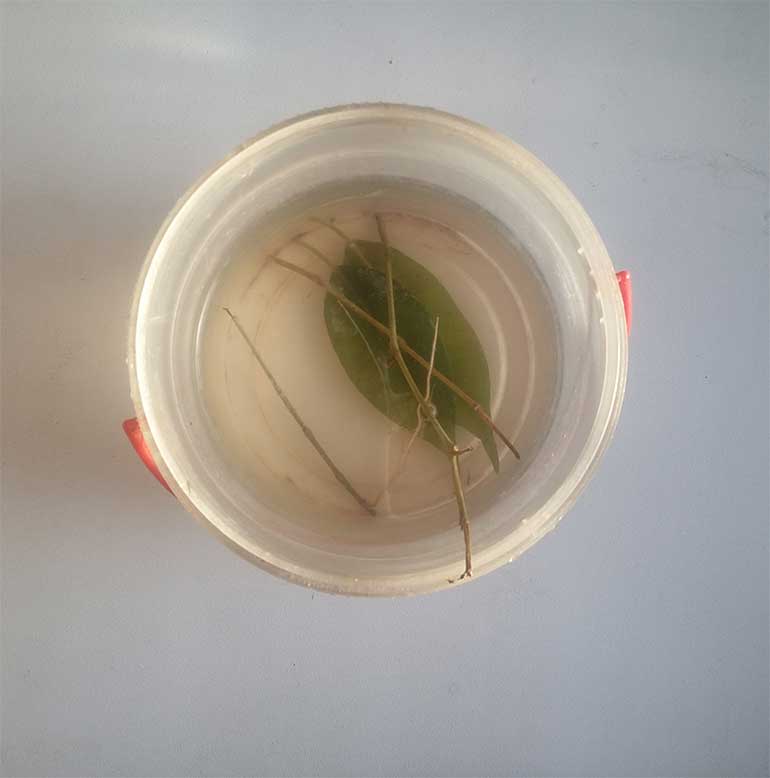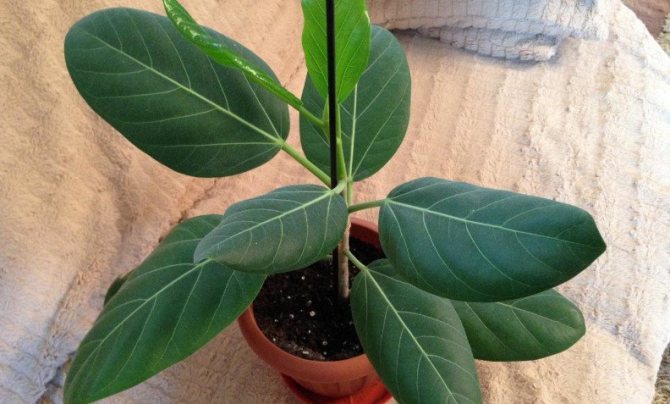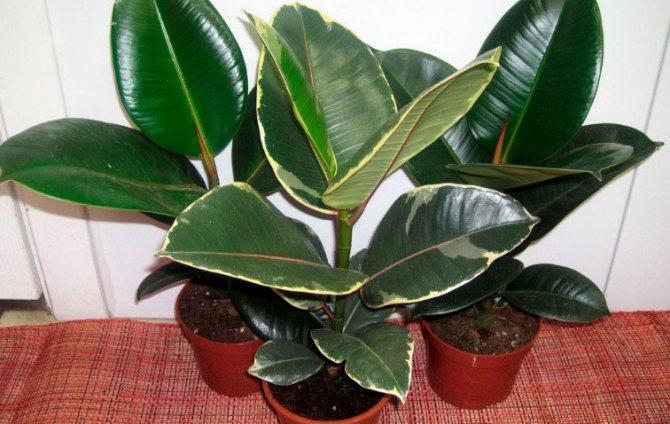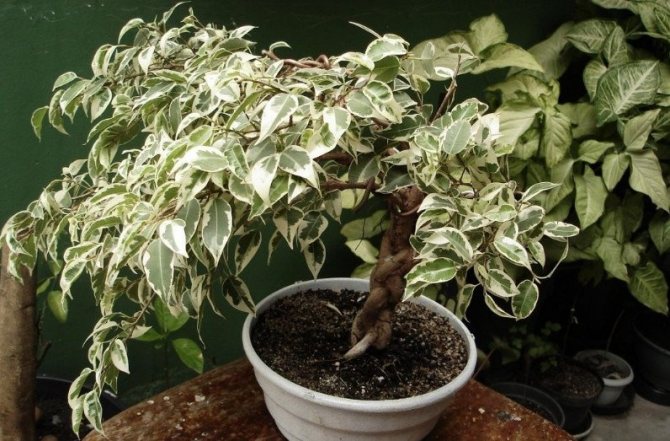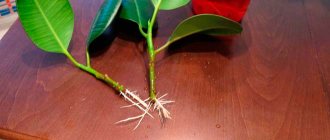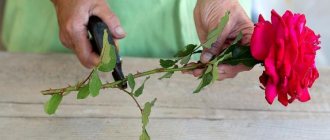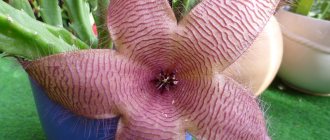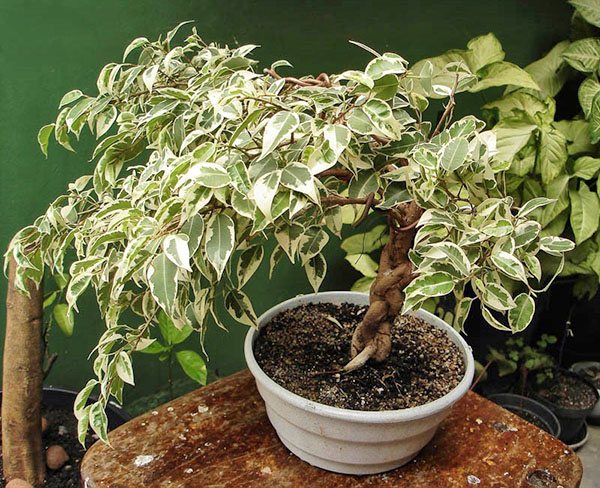
Among its congeners, Benjamin's ficus stands out for its medium-sized graceful foliage and a spreading crown. With the advent of new varieties of the plant, its popularity is growing, and for many flower growers the question becomes urgent: "How to reproduce Benjamin's ficus?"
All ficuses are hardy and very tenacious. Their shoots, in contact with the soil, form roots and give life to new plants. Aerial roots, descending to the ground, provide additional nutrition for the growing crown. Even the unusual shape of the fruit seems to be designed so that the birds eating the flesh will gnaw and then settle the seeds.
But how to propagate Benjamin's ficus at home? Are there any peculiarities and pitfalls here? Plants of this species reproduce vegetatively without complications. The most common method is cuttings, which is how most plants are propagated. Among them are hibiscus, lemon.
Propagation of ficus Benjamin cuttings
To obtain young ficuses, it is not at all necessary to take only the apical parts of the shoots. The plant develops when a stem cuttings are rooted with buds dormant in the leaf axils.
If there is not enough planting material for the propagation of Benjamin's ficus, even a single bud will give life to the shoot.
Cuttings are cut from an adult plant so that:
- the base of the future seedling was semi-lignified, that is, still flexible, but no longer green, like newly formed shoots;
- the stem had 4 to 6 unfolded leaves.
On the cuts of the stems of all varieties of ficuses, milky sap is released. Before rooting, it is removed under running water or with a soft cloth. The lower leaves that interfere with rooting are cut off:
- Immature, green cuttings are almost impossible to root. From a long stay in water or substrate, they rot and die.
- If the grower has only fragments of adult, lignified branches at his disposal, then there is a chance to get roots.
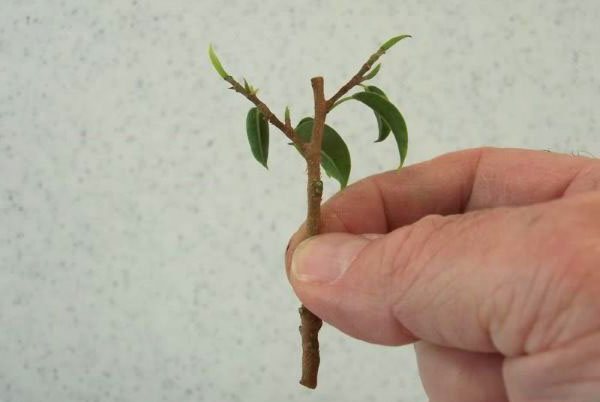

How to root Benjamin's ficus in the latter case? The base of the cutting is carefully cut along the stem with a very sharp knife. There may be several such cuts. To prevent parts of the cutting from touching, a match or a toothpick is placed between them. The original technique allows you to stimulate root formation on ordinary cuttings, and is also used by bonsai lovers to obtain miniature plants of the most bizarre shapes.
When propagating ficus Benjamin, cuttings are rooted in several ways:
- in water;
- in perlite;
- in a light, loose substrate, for example, consisting of peat, crushed charcoal and sand.
At an air temperature of at least 20 ° C and high humidity, roots will form in 2–4 weeks. To speed up the process, use a room greenhouse or cover the container with cuttings with a bulk bag.
The roots formed during the reproduction of Benjamin's ficus are quite powerful. When they grow a few centimeters. It's time to transfer the seedling to a permanent place of "residence" in the ground.
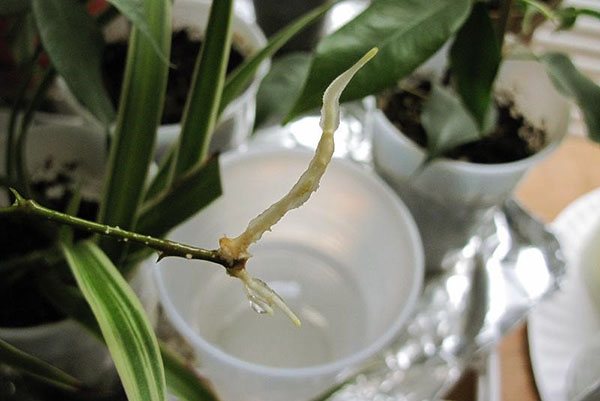

For a young ficus, willingly and quickly growing the root system, take a ready-made aerated, moisture-permeable substrate. Sometimes you make your own potting mix. An example is soil based on leaf and sod land, peat and perlite. In such soil, the ficus will receive proper nutrition and securely anchor.
In the first weeks of acclimatization, the seedlings are covered with a bag, which is removed when the plant gives its first leaves of its own.
At home, propagation of Benjamin's ficus can be carried out using cuttings with only one leaf and a small section of the stem. The main thing is that there is a healthy viable kidney in the sinus.
In this case, the shoot along the internodes is cut into separate fragments, which are immediately dried with a napkin and planted in the substrate. The soil should reach the base of the leaf petiole, but the leaf plate itself is carefully rolled up and fixed in the form of a tube. This will prevent the seedling from evaporating too much moisture, precious for the tiny plant.
Procedure technology
To obtain a new healthy, viable plant in a short time, you need to correctly take the shoots from the ficus. You can use several pieces at once to ensure that rooting is successful, but usually one is enough. Before taking cuttings, you should prepare the necessary tools, improvised means, containers, water or substrate, only then carry out the procedure.
How to take a ficus shoot:
- Choose a young, well-developed shoot with at least one healthy eye.
- Cut with a sharp knife so that the bud remains on top, above it you can remove the excess part of the branch at a right angle. It is advisable to cut the bottom of the rubber-bearing ficus at an angle, half of the internode without an eye should remain on the handle.
- Put the shoot in warm water for several hours, dry it, treat the damaged stem with crushed activated carbon. If this is not done, the juice that comes out will clog the passages, it will be more difficult for the roots to break through.
- Grow in water or substrate.
Propagation of ficus Benjamin by layering
This method is used:
- if the plant is reluctant to give young shoots, but there are already mature lignified shoots in abundance;
- bonsai lovers who want to get a lot of aerial roots from the ficus.
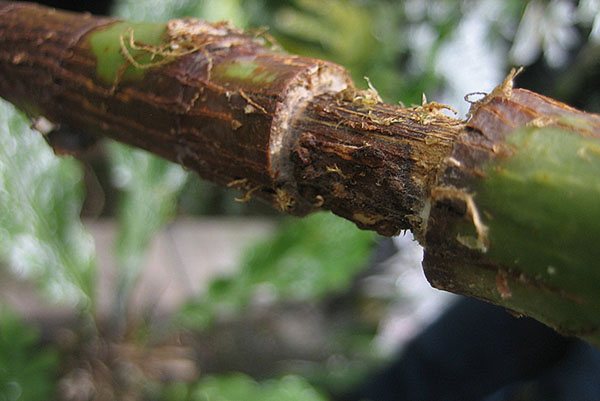

How to root Benjamin's ficus using layering? The method is similar to propagating rubbery ficus using layering.
On a lignified branch or trunk, without affecting the wood, a ring-shaped cut of the bark is made. The naked tissue is treated with a growth stimulant and wrapped in wet sphagnum or a soil mixture based on it. From above, the structure is fixed with a film, firmly fixing its edges with tape, wire or thread.
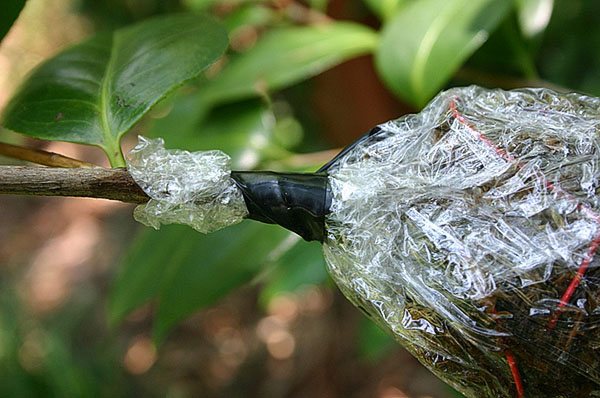

When the formed roots become visible through the film, they are freed, and the seedling obtained from the shoot is carefully cut off below the root system. In the future, the planting of such a plant is carried out in the traditional way, and the place of the cut on the parent plant is treated with garden pitch or ground coal.


How does Benjamin's ficus still reproduce? Although seed propagation of a crop at home is practically not used due to its laboriousness, it is indispensable when creating new varieties and hybrids. And to obtain a large number of plants of the same type, for example, for landscaping or commercial use, today they resort to cloning. In this case, industrial propagation of Benjamin's ficus is carried out, photo from fragments of leaf tissue.
How to propagate with air layers
Ficuses reproduce well with the help of aerial roots. This is an especially good method if the indoor ficus has almost ceased to produce young shoots and its rough branches are not suitable for ordinary cuttings. The plant must be healthy and strong in order to propagate with an aerial shoot.
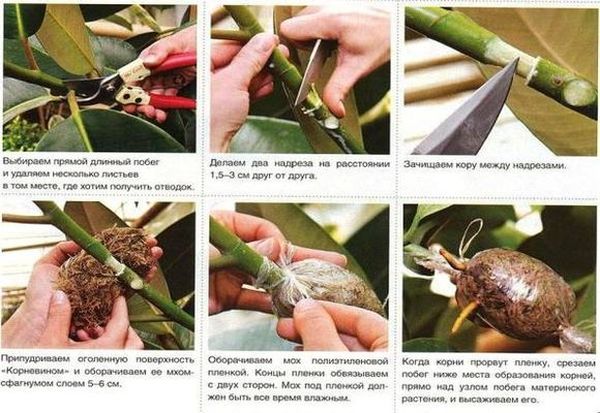

Since in this case we have to root Benjamin's ficus before separating the stalk from the mother plant, we first need to outline a place for future roots. In this case, the branches can be large branches.
A circular notch is made on the trunk at the selected place of the home ficus, or the bark is cut off.The wound should be disinfected with activated carbon, and then treated with a growth stimulant. This can be done with a cotton pad. Further, sphagnum moss is applied to the place of the cut or notch - this is an excellent medium for small roots, moreover, protecting them from rot. You can attach the moss to a branch using polyethylene or cling film. Its edges can be secured with a wire or thread, but not tightly so that air can flow.
Now we grow the roots on home ficus - for this you only need to periodically moisten the moss (as it dries, it becomes lighter). After about 2 months, the roots will completely braid the moss and become clearly visible under the film. After that, the new shoot can already be cut (under the root system, of course) and start planting it in a soil suitable for ficuses.
In ficus Benjamin, such reproduction usually proceeds successfully even with minimal care and adherence to the rules.
As you can see, it is not so difficult to deal with the reproduction of ficuses. Observe the necessary conditions, do not forget to take care of cuttings and layering, and soon you will receive the desired amount of healthy young plants.
Features of the
The plant is relatively unpretentious. It does not require any specific maintenance. Reproduction of ficus Benjamin can be done in three different ways. They will need cuttings, cuttings or seeds.
To propagate a tree at home, you need to choose the optimal time for this, that is, when the ficus is in a state of active growth. It's spring or summer. Due to the fact that during this period the root system is growing rapidly, the procedure will almost always be successful. It is possible to grow a full-fledged plant, even if there is only one bud on the handle.
If you choose the cutting method, then pay attention to the state of the ficus itself. He must be absolutely healthy - after the cuttings are taken, the plant will need internal strength and reserves to recover. For a patient with ficus Benjamin, this will be a stressful situation.
Breeding secrets by layering
This vegetative method of propagation of culture is practiced less often by cuttings, but in some situations it is most justified. In order for the rooting and adaptation of a new plant to be successful, you need to follow simple recommendations:
- maternal ficus must be healthy;
- choose thick lignified shoots;
- make sure there are several healthy growth points;
- insert a match or toothpick into the cut site;
- process the cleaned area with Kornevin or Epin;
- monitor the moisture content of moss or other substrate used;
- provide air access to young roots;
- cut off the shoot from the mother plant only when the overgrown roots fill the entire glass;
- transplant into a suitable soil mixture - light, drained, nutritious, with a neutral reaction;
- after transferring to its own container for a week, create greenhouse conditions.
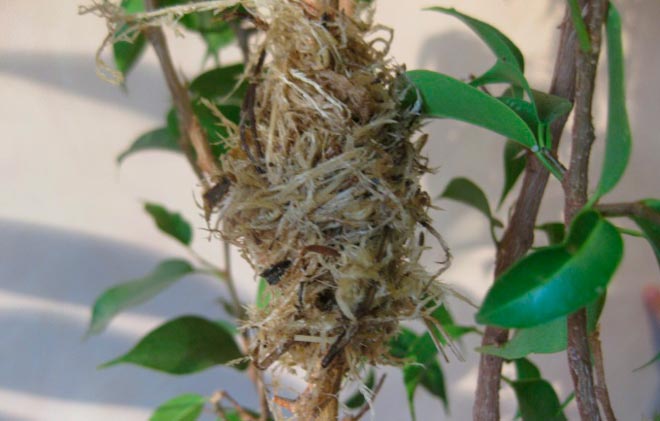

The ways
The easiest way is grafting. Even a novice florist with minimal knowledge can handle it. The main thing is to complete all actions step by step, observing the sequence, preparatory measures and further care.
Cuttings
Initially, you need to take a scion containing a maximum of 5 internodes. The length of the cutting, which is taken for propagation, should be 15-17 cm. Too large a shoot will have small roots.
The stalk should not be very young, but semi-lignified. Cut it obliquely to make a sharp corner. For this procedure, use a sharp knife, otherwise the plant tissue on the cut will "crumple" and the roots will not appear. Leave 3 sheets on the layer, the rest must be cut off. To make the roots form intensively, make several cuts.
Place the cutting in water for about 8 hours, changing the water every 3 hours. This stage will relieve the cuts from clogging with milky juice, which, when dried, prevents the formation of roots.After the expiration of the prescribed period, remove and dry the layers, treat its cut with a special tool that stimulates the formation of the root system.
Place the stalk in a container of water. To prevent it from rotting, dissolve charcoal in water. You can do it differently: put a piece of wet cotton wool on the bottom of the dish. Place the stem in a lighted place out of direct sunlight, otherwise the workpiece will wither. If everything is done correctly, then after two weeks the cutting will give roots. When their length reaches several centimeters, you can start planting in the ground.
Pay attention to the variety of ficus used for propagation. In variegated varieties, roots are formed more slowly than in plants with monochromatic green foliage.
Sheet
Reproduction by the Benjamin ficus leaf differs from a similar method that is often used by lovers of violets. A fallen or simply torn leaf will not work for this. A part of the stem is cut off, on which only one leaf is located. The length of such a piece of the shoot should be about 6 cm. For cutting, we use a sharp knife.
The workpiece is slightly split and left in a glass of water for 24 hours. During this time, the milky juice will drain. After that, several cuts are made on the shoot, and it is placed in a composition that enhances the formation of roots.
Next, we place the shoot in the substrate, burying it to the base of the leaf. We cover with a transparent cap. This can be a regular jar or a cut-off base of a plastic bottle. We put such a greenhouse in a bright place. If after a month the plant gives a new leaf, then rooting has occurred.
From seed
It is possible to dilute ficus with seeds, but this is a rather laborious and ineffective activity. Therefore, this method is not popular with florists. But if you decide to try it, then before planting the seeds must be treated with a weak solution of potassium permanganate, and then soaked in a special solution that stimulates growth.
The first layer of 2 cm, which should be laid on the bottom of the container, is the drainage. The soil is poured over it, forming a pillow 10-12 cm high. The substrate intended for sowing is sterilized with steam for about an hour. Ideally, it is advisable to buy a ready-made mixture that is created specifically for ficus. It contains three components in equal parts: sand, peat and deciduous sod.
Sowing dishes should not be deep. Please note that the substrate is poured into it in such a way that 4-5 cm should remain between the layer and the edge of the dishes. It is not necessary to seal it strongly. Otherwise, the seeds will not receive enough air, moisture will stagnate, which will cause rotting.
Spread the seeds evenly. Since they are very small, use tweezers. If there are no tweezers, replace it with a wooden stick moistened with water - the seed will easily stick to the damp surface.
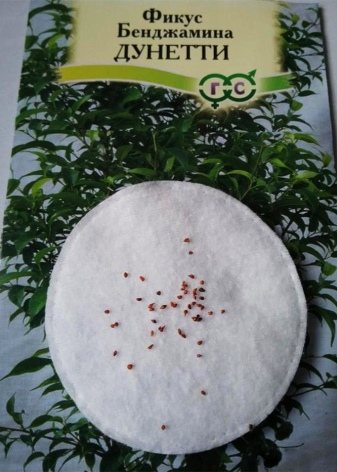

After the seeds are distributed in the pot, cover them with 5 mm of soil and moisten. A spray bottle is suitable for this procedure. You will have to use it for further watering. It will distribute moisture evenly and will not wash out the surface like a watering can.
We create a greenhouse effect: cover the container with foil or glass. In order for the seeds to germinate and not die, do not place such a mini-greenhouse in bright sunlight. The place should be light and warm. Be sure to ventilate the greenhouse. To do this, remove glass or film for a quarter of an hour 2 times a day.
Seed propagation
As mentioned above, this breeding method is rather complicated and ineffective, so growers rarely resort to it. If this method was chosen, before planting, the seeds are treated with a fungicidal solution or a growth stimulant, and then laid out on the surface of the substrate, which should be slightly moistened.
To create greenhouse conditions, the planting is covered with a transparent film.It is imperative to maintain the temperature regime within 25 - 28 degrees. After the emergence of seedlings, it is recommended to put them in a well-lit place, otherwise the seedlings begin to stretch out.
How to care?
After the plants have grown roots, you need to plant them in flower pots. To root the ficus correctly, pay attention to a few key points.
- Landing is done in a container, the bottom of which contains holes. First, the drainage is filled up. You can buy ready-made in the store or replace it with expanded clay, pebbles, pebbles.
- On top of the drainage is soil. Its layer should not reach the edge of the pot by 2-3 cm. We moisten the substrate, make a depression in it and plant the plant.
- The roots can be trimmed beforehand if they are very long. Sprinkle gently, without tamping the soil hard, so as not to damage the roots.
- The last step is watering.
To make the process as comfortable as possible, it is better to buy ready-made soil designed specifically for ficuses.
The planted plant needs proper care.
- First of all, it is the temperature regime. It is ideal if in summer temperature fluctuations are insignificant and vary from +25 to + 28 ° С. In winter, the room temperature should not drop below + 15 ° C.
- The light should be diffused and not too bright. Direct sunlight can burn the leaves.
- It is important to maintain optimal humidity: water the plant regularly, avoid overdrying or waterlogging. Spray the leaves once a week, or wipe them down with a damp soft cloth. Warm showers can be arranged in summer.
- Do not forget to periodically feed Benjamin's ficus. They start feeding when the tree is 2 years old.
- The grown plant will need to be transplanted into a larger planter. Perform the procedure in the spring, as this is the optimal time.
Florist tips
- Monitor your pet and his condition.
- Ficus Benjamin can become an object of attack by insect pests: scale insects, thrips, spider mites. As soon as you notice a deterioration in the appearance of the plant, proceed with a thorough examination, diagnosis and therapy.
- Decide immediately on the place for the ficus. A characteristic feature of the plant is the shedding of leaves when rearranged. This does not happen immediately, but about a week after you move it. The change of "place of residence" causes stress in the ficus Benjamin, as a result of which the leaves turn yellow and fall off strongly.
- Provide enough light for the ficus to look attractive. With a lack of lighting, variegated varieties can lose their rich color: white or yellow blotches will turn green.
Follow these simple tips, and the ficus will delight you for a very long time.
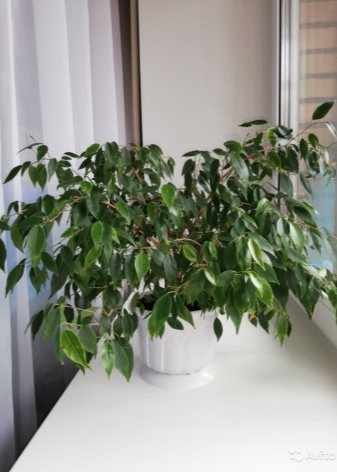

You can learn more about the reproduction of Benjamin's ficus in the next video.
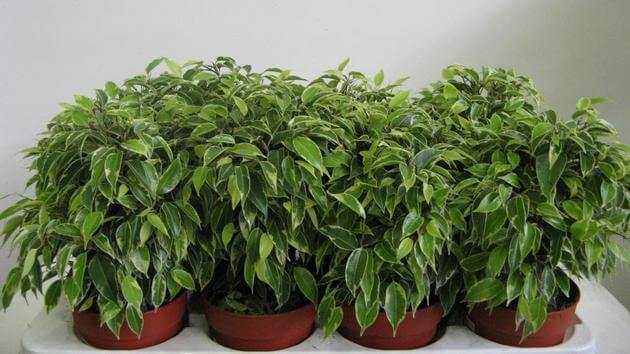

Every novice florist asks the question of how how to propagate Benjamin's ficus at home.
According to the rules, an ornamental plant is bred in spring and summer, during the period of active growth. At this time, young shoots will take root faster and most successfully. Let's consider in more detail the method of breeding this culture.
Benjamin Ficus Care
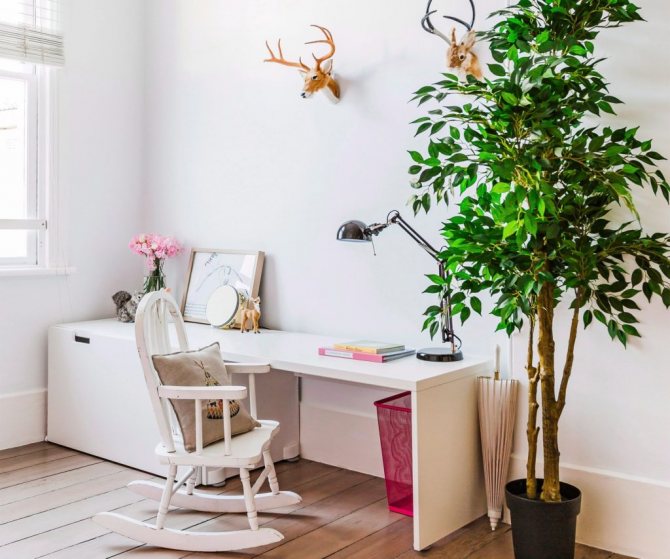

Ficus Benjamin feels good in bright, but diffused light. Direct sunlight leaves burns on the leaves, making them faded, the plant loses its decorative effect. In summer, the temperature should not rise above + 25 ° C. In extreme heat, the tree sheds its leaves, as in a lack of light. In winter, it is enough to keep the room temperature +17 ° C.
Benjamin's ficuses love frequent spraying. Moisture protects leaves from spider mites, washes away dust, prevents leaf fall, indicating inappropriate conditions.
Plants are watered regularly, more often in summer than in winter. If water has accumulated in the pan, it must be drained immediately - the roots of benjamin ficus do not tolerate dampness.If the soil dries out, the plant will immediately get rid of some of the leaves to reduce evaporation. Therefore, when choosing an irrigation regime, you should adhere to the rule - take up the watering can when the top layer of the earth dries up, but moisture will still remain in the depths.
Top dressing is carried out every 2 weeks, in winter, once a month. Fertilizers are suitable:
- Agricola for ficuses;
- Bona forte for ficuses and palms;
- "Flower paradise" for yucca and dracaena ficuses.
If the plant begins to shed its leaves, you need to move it closer to the window, or vice versa - remove it from the draft. Check the room temperature and soil moisture in the pot. If the soil is dry, the ficus must be watered first with clean water, and then with fertilizer diluted in water. After a while, the tree will restore its decorative effect.
Who is this plant suitable for


Room
ficuses reach a significant size, so they are suitable for owners of spacious rooms. The plant is used for landscaping light offices, shopping centers, lobbies. An adult bush can be kept in the back of the room, a few meters from the window.
There are signs associated with this type of ficus. Esotericists note its beneficial effect on the psychological environment in the family. Ficus is a real symbol of home comfort. It improves the energy of the home, increases the comfort of everyone in the room. In its homeland, it is considered a sacred plant that brings good luck and happiness.
Ficus Benjamin is a beautiful, popular, but requires care and regular maintenance plant. It perfectly decorates the interior, suitable for apartments and public spaces.
How to propagate ficus benjamin at home
Currently reproduction of ficus benjamin
carried out in the following four ways:
- sowing seeds;
- cloning;
- seedling cuttings;
- selection of layers.
Seed propagation in at home
hindered by low performance. Cloning is commonly used for industrial purposes. In this case, a new flower is grown from a leaf.
Ficus Benjamin propagation by cuttings
and transfers best of all by layering.
Apical cuttings
Before how to propagate ficus benjamin
by cuttings, make sure that the main plant is not infected or too old. Semi-lignified cuttings 9-15 cm long are cut from the top of the bush with a sharpened knife at an angle of 45 ° closer to the node. Remove excess foliage, leaving 3-4 leaves. The released milky juice must be washed off. Drying up, it interferes with the full development of the root system. You can put the sprout in warm water, changing it until the milk stops coming out. After that, the cuttings are dried and placed in a vessel with water at room temperature.
Attention! Do not use scissors or blunt objects to cut the cuttings. The plant tissue can be crumpled, which will inhibit the rooting of the branches.
To avoid rotting of the cutting, a tablet of activated carbon is dissolved in water and make sure that the leaves do not touch its surface. Container with cuttings at home
put in a lighted place, avoiding direct sunlight. Water is added as it evaporates. In half a month
ficus benjamin
at the end of the cuttings, growths will form, from which the roots are formed. When their length reaches 3-5 cm, the seedlings can be planted in the substrate.
Rules to help you choose a healthy shoot
If you want to separate the shoot from the ficus on your own, then you only need to choose strong and healthy plants, for example, you can take a stalk when cutting off the crown of an adult ficus. However, before doing this, you need to make sure that there are leaves on the selected branch. The length of the scion should be at least 10-15 centimeters. All actions must be performed with a sharp knife or blade. The incision must be made at an oblique angle. And in no case should you use scissors and even more so break a branch, so you will only injure the plant, the result of which will be a delay in rooting and further development.
If you have chosen a large-leaved species for growing, then in order to grow a flower at home, it is enough that there are 3-4 leaves on the cuttings. In this case, it is advisable to cut the lower of them, since a large number of leaves will contribute to excessive evaporation of moisture. When growing small-leaved ficus, the lower leaves also need to be cut off, but their number may be more than 3-4.
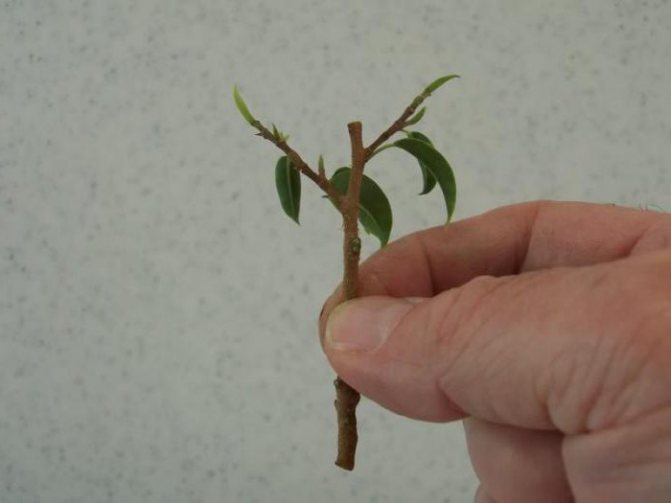

After the procedure for trimming the leaves and the process itself, the plant can start up white sap. If not rinsed with water, it dries very quickly. This should not be allowed. Therefore, after the process is cut off, the juice must be washed off with warm water or put in a container of water for several hours. It is also recommended to treat the cut with charcoal.
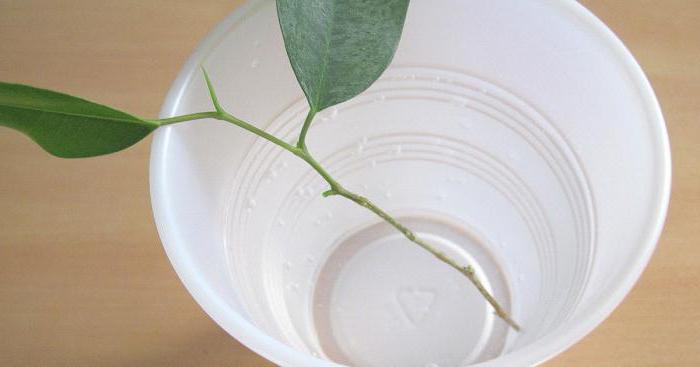

Before planting a ficus with a shoot, you need to dry it or simply change the water several times. There are two ways of planting: by cutting with roots and without it.
Rooting methods
When multiplying ficus Benjamin in at home
cuttings are rooted in water or in prepared soil. If the air temperature is maintained at 20-22 ° C and the required air humidity is maintained, the shoot will give roots within a month. Of course, they make sure that pests do not attack young shoots, and the roots do not rot. With proper care and compliance with sanitary standards, rooting in both ways will be successful. To stimulate cell division and root formation, the bottom of the cuttings is treated with Kornevin. A few drops of this or an analogue preparation can simply be dissolved in a liquid.
In water
Reproduction of ficus Benjamin
by rooting the shoots in water, they are carried out in a container with a removable bottom. The transplant process will be greatly facilitated. For the successful formation of the root system, water is poured so that it does not affect the lower leaves of the shoot, otherwise their plate will begin to rot. To prevent trunk rot, coal powder is dissolved in water. The conditions for growth are the same as for an adult plant. The fluid is changed periodically. When the ficus stalk gives roots, the seedlings are planted in the ground at a permanent place of "residence".
In the ground
Longer method in time. Sections of processed and dried twigs are sprinkled with charcoal powder. Then they are lowered by one kidney into the prepared and disinfected soil. Once the seedling is planted, the soil should be watered with warm water and slightly compacted. For successful rooting, young ficus benjamin
placed in an impromptu greenhouse.
It is created from cling film or a bag in which a hole is made. The polyethylene should cover the pot of soil, leaving the shoot outside. As with the previous method of rooting, the flowerpot is placed in a warm, bright place, avoiding direct drafts and maintaining a moderate soil moisture. Make sure that it is not spilled. Periodically, the cellophane is removed to ventilate the substrate. This will prevent root decay. When young growth forms foliage, reproduction of ficus benjamin
went well.
Rooting in the ground
Another type of breeding is the direct planting of a newly cut offshoot in a pot at home. You can plant it in the ground immediately after processing the plant. But this process is very different from the previous one. For rooting, you need to make a mini-greenhouse, which should have good lighting and add a little fertilizer. After planting the stem in the ground, cover it with a glass jar or cut-off plastic bottle. And don't forget to take care of it, watering and airing the plant regularly. After about 2-3 weeks, the first leaf may appear, this indicates the rooting of the cutting.
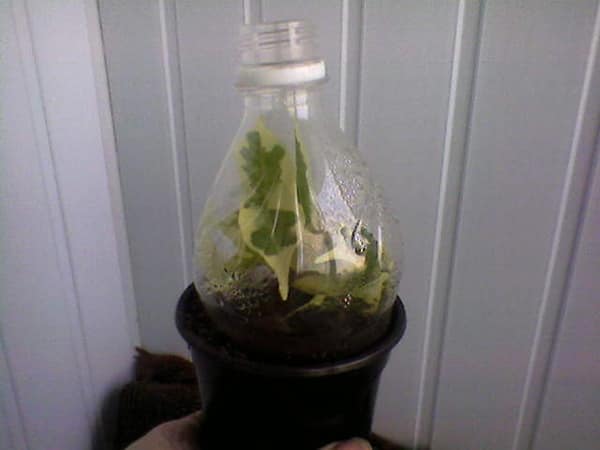

Greenhouse conditions for growing a new plant
Propagation by leaves
Ficus at home can be grown not only with a shoot, but also with the help of a leaf. It is worth remembering that you need not just cut off the leaf and put it in water, but you need to cut it off with a small piece of the stem, also process it and plant it in the ground.Be careful with ficus juice, it is very poisonous and can irritate the skin and mucous membranes. Therefore, it is recommended that the cutting procedure be done with gloves. You need to plant the shoot by deepening it into the ground to the leaf cutting. The leaf must be rolled into a tube and fixed with electrical tape.
Growing ficus with seeds
Ficus seeds can be purchased at specialty flower shops. First, at home, you need to soak the seeds for a day in a solution that stimulates plant growth, and then sow them into moist soil, covering the pot with cling film. The temperature regime should be 20-25 degrees, and good lighting is needed, so you can make it grow. We are waiting for the first shoots to sprout.
Planting cuttings
If a ficus benjamin reproduction
transferred in water with rooting, then it is planted in a pot. Landing is carried out in compliance with the following steps:
- choose a pot or flowerpot with holes at the bottom and cover the bottom with a layer of drainage from expanded clay, small pebbles, fragments of brick or tiles;
- fill the pot with a layer of prepared soil, leaving 2-3 cm to the top;
- moisten the ground, make a hole and place a stalk in it, after cutting off the roots to the same length;
- the roots are covered with soil, not ramming them strongly, as this can damage the delicate root system of the plant. The earth itself will rise to the desired level under irrigation.
Young ficus benjamin
requires a ventilated, moisture-permeable and nutritious substrate. If there is no way to buy a ready-made earthen mixture for ficus in a store, then it is created independently from the earth, sod, peat, sapropel, sand and perlite collected under leafy trees.
Rooted plant care
Along with most indoor plants, Benjamin's ficus must be grown in flowerpots equipped with drainage holes. Ceramic flowerpots are most preferred. Ficus also shows good survival in plastic pots. At the bottom of the container, it is necessary to lay a drainage layer in the form of expanded clay, broken earthenware and charcoal, and only then you can fill up the soil.
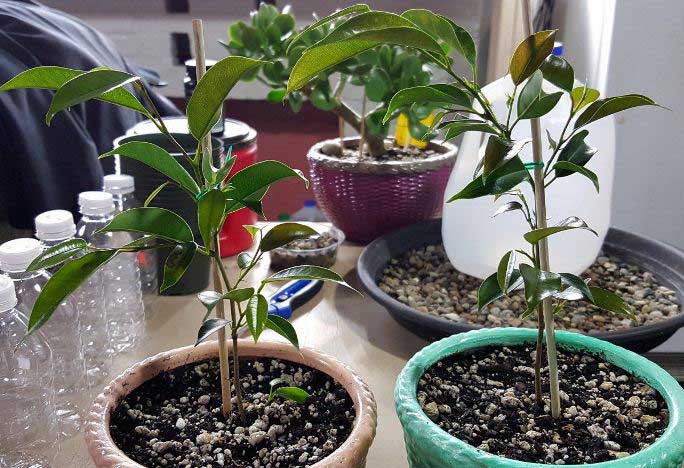

In stores today there is a wide range of soil for ficuses, which fully meets all the requirements for growing this type of indoor plants. A self-prepared substrate for planting should be a mixture of leafy and soddy soil with the addition of peat and clean sand. The soil in the flower pot should be tamped very carefully.
The planted ficus during the first one and a half months will not need fertilization. Further feeding is carried out in the warm season twice a month, and with the onset of the cold period - once a month. Watering is performed as needed. Young plants should be transplanted annually.
Care after breeding
IN at home
make sure that the planted young growth receives enough water. To avoid rotting of the ground and root parts of the crop, maintain a moderate soil moisture. The soil must be warm. To do this, in the cold season, use a heating pad or heating device. Temperature fluctuations in the room should not be abrupt.
Ficus Benjamin
must adapt to the new environment gradually. Seedlings are inspected daily for pest and fungus infestation. For bonsai-type growth, several cuttings can be planted in one flowerpot, which are neatly woven in a spiral pattern.
Features of the care of the handle
After it was possible to plant a ficus with a shoot, the plant will require careful maintenance, in particular, it must be sprayed daily with water at room temperature, especially if the apartment is heated. It is better to put the pot with the plant in a bright place, since the leaves in this case will be better colored, but the light should be indirect.
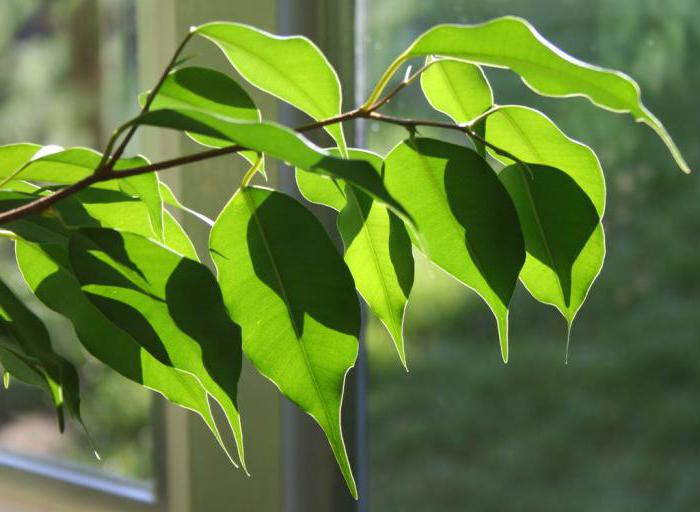

Knowing how to properly plant a ficus with a shoot is not enough without knowledge of care. Watering with soft warm water is required twice a week.Before each next watering, you need to make sure that the soil is slightly dry, since excess moisture can lead to rotting of the roots, and also because the leaves will fall off. It is impossible to allow the roots themselves to be in water, but there should not be a lack of moisture either, since the protective reaction in this case will be complete disposal of the leaves.
If you plant three branches of ficus in a pot, then as they grow, you can give them a rather attractive shape, for example, braid several young plants in pigtails at once. You can force the ficus to branch in the direction you want, for this it is enough to use a soft wire and tie the stem to it.
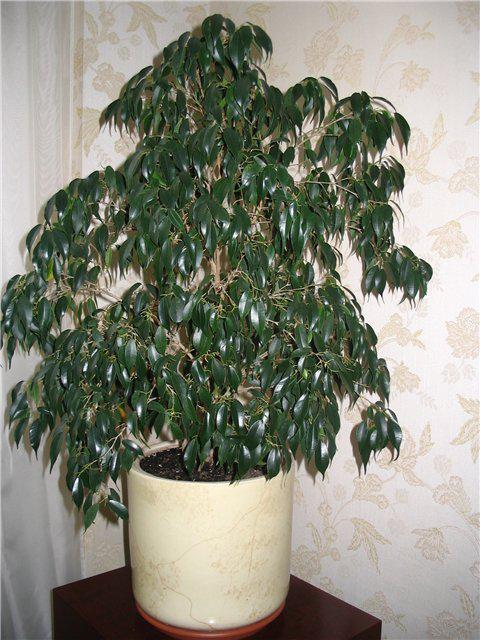

When growing, remember that Benjamin's ficus can be affected by mealybugs, scabies. However, the biggest problem remains leaf fall, which can occur due to lack and moisture, and as a natural process as they mature.
If you pay due attention to the ficus, then literally in a few years, Benjamin's ficus will grow on your windowsill, which you can give any shape.

